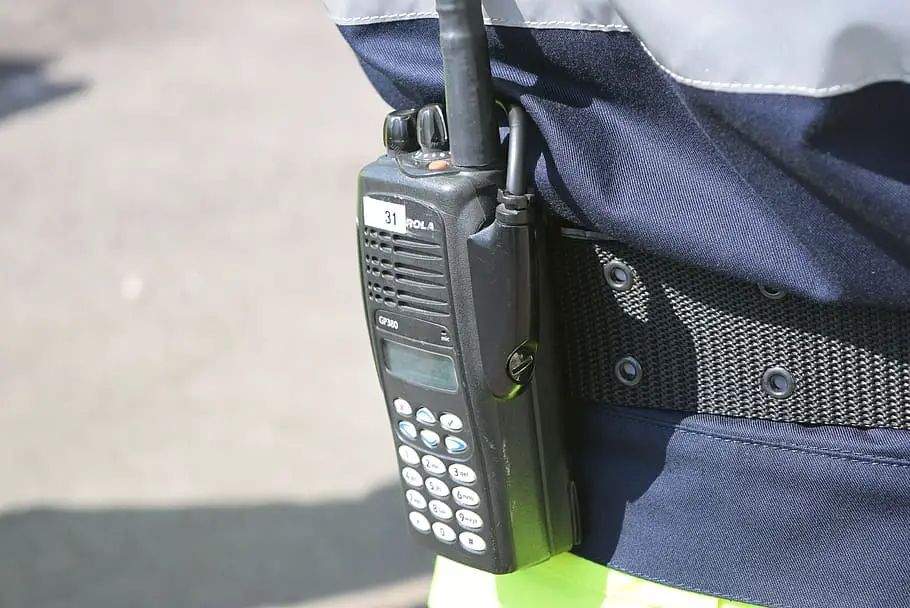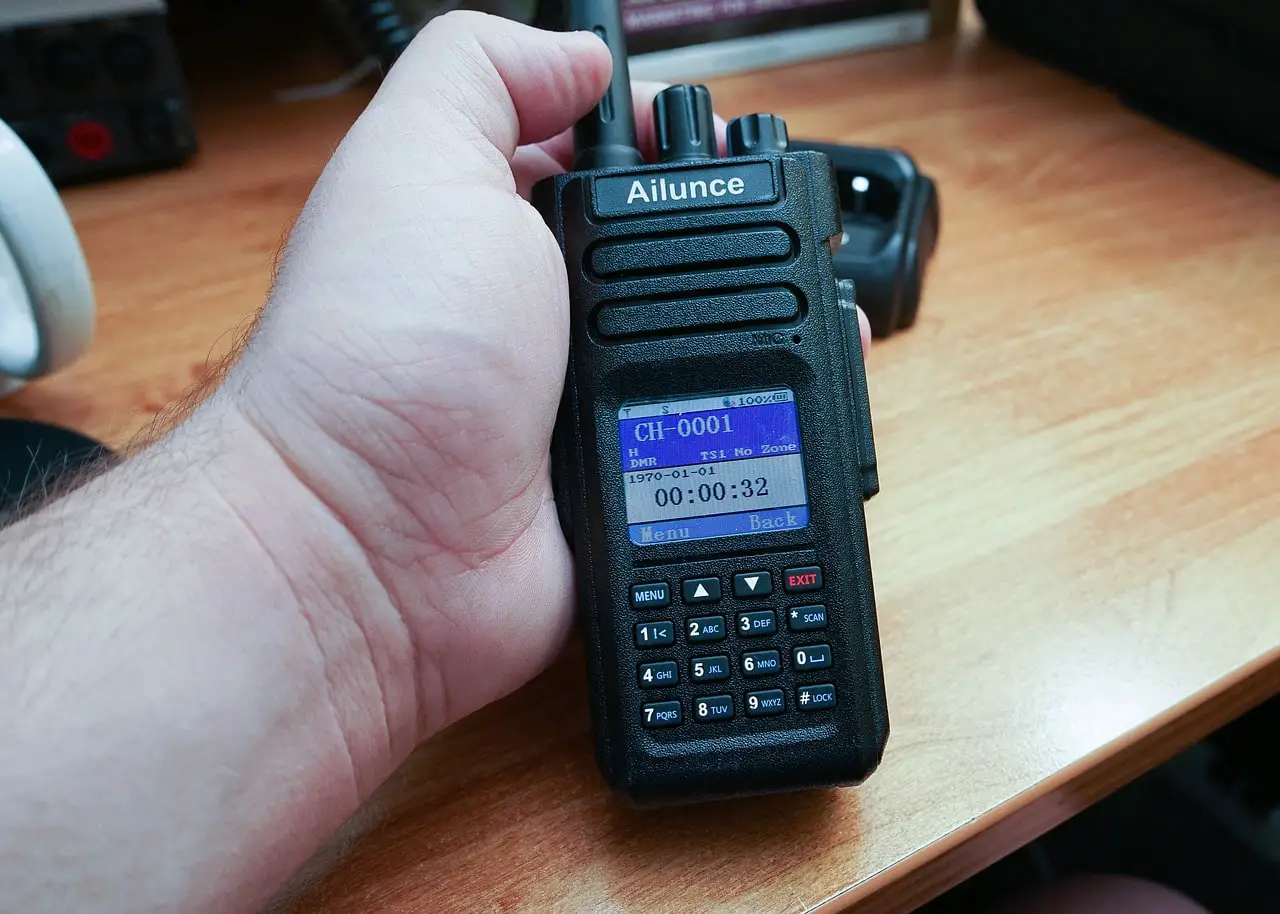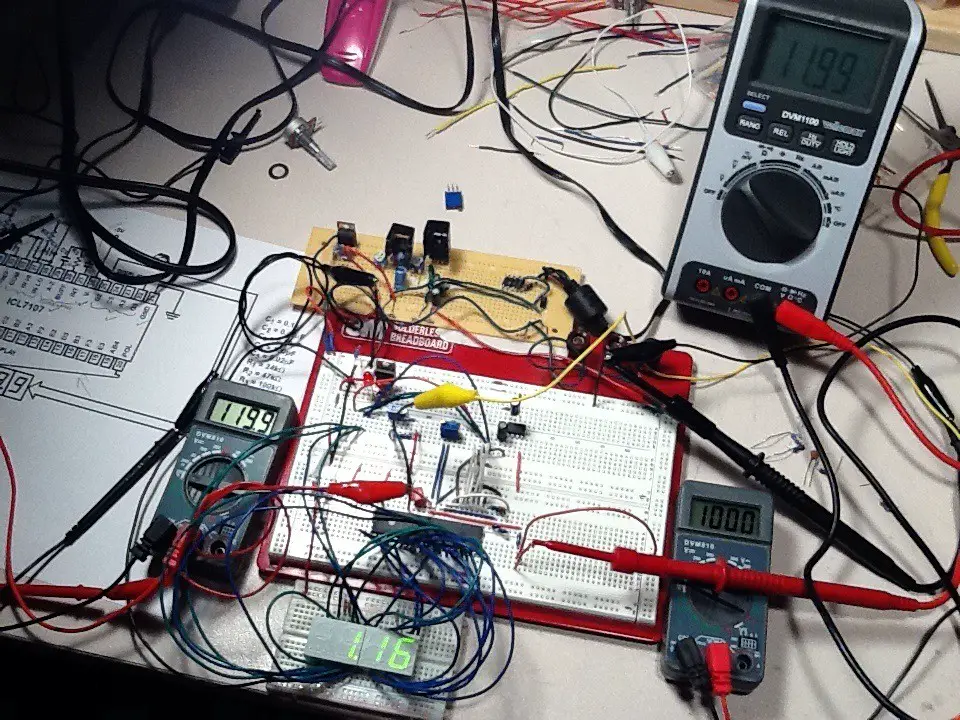Ahoy, tech fans! Ready to explore the realm of two-way radios? Let’s go! We’ll have a blast while keeping it informal.
Are you experiencing issues with your two-way radio? Don’t worry; I’m here to help. Whether you’re experienced or just starting, I’ve got all the tips and tricks to get your radio back on track.
We’ll begin by tackling some common causes of radio woes. From poor audio to signal interference, we’ll cover the aspects that can affect its performance. Then, we’ll delve into lesser-known details that could be the answer to fixing your radio troubles.
Like squelch control – it filters unwanted signals for clear communication. Or battery life management – so your radio won’t die at the worst moment.
Ready to learn something new? Here it is: two-way radios were invented during WWII for military personnel to communicate on the battlefield.
So, tech fans, let’s start our troubleshooting journey together. With this guide, those radio problems won’t stand a chance. Let’s conquer them!
Getting Started with Two-Way Radios

To get started with your two-way radios and troubleshoot any issues, learn how they work and familiarize yourself with joint problems. This section dives into “Understanding the Basics of Two-Way Radios” and “Common Issues with Two-Way Radios.” Get ready to master your radios and conquer any challenges that come your way!
Understanding the Basics of Two-Way Radios
Two-way radios, also called walkie-talkies, are a way to communicate immediately. They are used for many tasks, such as public safety, security, construction, and hospitality.
To understand two-way radios, there are a few facts to remember. First, you can only talk one at a time. This is called simplex communication. It makes sure the conversation is clear and uninterrupted.
The range of two-way radios is also essential. Content means how far away you can be while communicating with the radio. Terrain, weather, and blockages can affect the range. You have to choose radios with suitable coverage for your needs.
Features of two-way radios are also good to know. Channel scanning, privacy codes, weather alerts, and hands-free options exist. Knowing how each part works helps you use the radio correctly.
Pro Tip: Get extra batteries or a charging station to ensure your radios keep working during long shifts or emergencies.
Common Issues with Two-Way Radios
Two-way radios have unique features and functions, but like any other tech, they have problems. Knowing these can help you fix them quickly and secure seamless communication.
- 1. Battery Life: Old batteries charge less, leading to shorter talk times. Regular battery maintenance and high-capacity batteries can extend the life of your devices.
- 2. Interference: Interference from other devices or nearby radios on the same frequency can cause static noise or missed messages. Choosing the right channel or privacy codes can reduce disruptions.
- 3. Range Limitations: Obstacles such as buildings, mountains, or dense foliage can weaken signal strength and reduce communication range. Repeaters or higher power outputs can extend the range.
- 4. Durability Issues: Dust, moisture, and rough handling can lead to durability issues. Military-grade water and shock resistance will ensure long-lasting performance.
Consider these factors when purchasing and using two-way radios. Stay updated with new technologies and advancements in two-way radio systems for informed decisions when upgrading or changing existing devices.
Experience effortless connectivity with two-way radios for efficient collaboration across industries. Enjoy the benefits!
Troubleshooting Two-Way Radio Problems
To troubleshoot two-way radio problems, dive into the solutions provided for each issue. Whether you’re experiencing no power or battery drain issues, dealing with no sound or poor audio quality, facing range and reception problems, or encountering interference issues, we’ve got you covered. Find quick solutions for a smooth two-way radio experience.
No Power or Battery Drain Issues
When troubleshooting two-way radio problems, a common issue is a lack of power or battery drain. This affects the radio system’s functioning. It’s necessary to identify the cause and implement solutions to solve this.
A table of possible causes and solutions can help. This should have columns such as “Possible Causes” and “Solutions“. Then, add specific details based on data from reliable sources.
For example:
| Possible Causes | Solutions |
|---|---|
| Faulty battery | Replace the battery |
| Loose battery connection | Ensure proper connection |
| Battery drainage | Check for power-consuming settings |
| Radio overheating | Allow the radio to cool down |
Note that these are just some potential causes and solutions. It’s best to check the manufacturer’s guidelines or get professional help.
Also, proper maintenance is essential. Check the battery for signs of wear or damage. And store spare batteries in suitable conditions.
Sometimes, users overlook basic troubleshooting steps when faced with no power or battery drain problems, like not checking if the device was turned on or ensuring proper charging. These experiences show the importance of examining fundamental aspects before getting into more complex solutions.
To keep two-way radios running optimally, it’s essential to understand and address no power or battery drain issues. Users can ensure continuous communication by using practical troubleshooting steps and engaging in regular maintenance.
No Sound or Poor Audio Quality
Are you having issues with your two-way radio’s sound? Don’t worry; we’ve got you! Here are some troubleshooting steps to help you get better audio quality:
- Check the volume settings. Make sure the volume is set to an audible level. It might be low because of an accidental adjustment or a software issue.
- Try different channels. Interference from other users or devices could be why you’re getting poor audio. Switching channels may give you a more precise frequency.
- Check the antenna connection. A loose or damaged antenna could cause poor audio signals. Make sure it’s securely attached and inspect it for damage. Replace the antenna if needed.
- Clean the microphone and speaker. Dust and debris can affect sound quality. Use a soft cloth or brush to clean them regularly.
Remember, excellent communication is vital when using a two-way radio – whether for critical situations or everyday interactions.
Range and Reception Problems
| Problem | Possible Solution |
| Weaker signal strength or reduced range |
|
| Noise interference or static |
|
| Poor reception in buildings or obstructed areas |
|
Ensure both radios have the same frequency and power supply for optimal performance. For a better two-way radio experience:
- Use external antennas for improved signal.
- Don’t place objects near the radios that may cause obstruction.
- Clean the contacts on the batteries and charging ports to maintain electrical connections.
These tips can help improve range and reception. Regular maintenance and environmental factors awareness are essential for effective troubleshooting.
Interference Issues
The table below shows common interference issues and their explanations:
| Interference Issue | Explanation |
|---|---|
| Frequency Congestion | Multiple devices running on the same frequency lead to signal overlap. Change frequencies or use sub-channels to fix this. |
| Environmental Factors | Tall buildings or dense vegetation obstruct radio waves. Change location or use higher-power radio to mitigate interference. |
| Electromagnetic Interference | Electronic devices near a two-way radio disrupt the signal. Isolate the radio from such devices or turn them off. |
Moreover, weather conditions or improper antenna placement can also cause interference. It is essential to inspect equipment regularly and ensure it works correctly.
To reduce interference, follow these steps:
- Optimize Frequencies: Select a frequency that minimizes congestion with other nearby devices.
- Improve Antenna Placement: Check the antenna’s position for optimal signal reception and adjust.
- Use Noise-Cancelling Features: Get radios with noise-cancelling technology to minimize background noise.
- Conduct Regular Maintenance: Inspect and maintain equipment regularly to identify/address interference sources.
These steps will improve radio performance and ensure communication without interruption.
Easy Steps to Troubleshoot Two-Way Radio Problems
Follow these easy steps to troubleshoot two-way radio problems for a seamless solution. Check the battery and power source, ensure proper antenna alignment, adjust volume and squelch settings, reset or reboot the radio, and remove interference sources. Fixing your radio has never been easier!
Step 1: Check the Battery and Power Source
Are you having connectivity troubles with your two-way radio? Make sure the battery is charged and connected to a reliable power source!
Follow these five steps to check the battery & power source:
- Check the battery for any damage or corrosion. Make sure it is properly attached.
- Look at the indicator or gauge on the radio display, if available. Ensure the battery is sufficiently charged.
- Connect the battery to a charger or replace it with a complete spare.
- Ensure all power connections are secure, including cables & adapters used in charging/powering the radio.
- Test new or working batteries/adapters if using an external power source, like AA batteries or a vehicle adapter.
Consult your user manual for your two-way radio model. Plus, having spare batteries & chargers on hand can avoid emergency downtime.
Inspecting these components and ensuring proper charging habits can stop disruptions during essential moments.
Step 2: Ensure Proper Antenna Alignment
Proper antenna alignment is critical for two-way radios to work well. To make sure your antenna is aligned correctly, follow these steps:
- Check its Position: Make sure it’s mounted vertically and not leaning or tilted. Put it somewhere high and free of obstructions.
- Align with the Transmitter: Point the antenna towards the transmitter using a compass. Move it around until you have the best signal strength.
- Fine-tune Signal Strength: Use a radio receiver to adjust the orientation until you get clear reception with no noise.
For better transmission and reception, proper antenna alignment is essential. Plus, do these for further improvement:
- Remove Obstructions: Remove buildings, trees, or other oversized items blocking the signal path between your antenna and the transmitter.
- Choose Quality Cables: Use good quality coaxial cables to connect your antenna to the radio equipment. Low-grade lines cause signal loss.
- Check Regularly for any damage or wear and tear in your antenna system. Replace destructive components fast to keep optimal performance.
The suggestions above will guarantee long-term reliability and efficiency in your two-way radio communication system.
Step 3: Adjust Volume and Squelch Settings
Want to troubleshoot your two-way radio? Firstly, locate the volume control knob and turn it clockwise to increase and counterclockwise to decrease. Make sure it’s loud enough without causing distortion.
Next, find the squelch control knob or menu setting. Squelch helps reduce background noise when there’s no signal. Set the squelch level low and gradually increase until you stop hearing static. Please don’t set it too high, as it may block weak signals.
Test the adjusted volume and squelch settings by transmitting a message and listening for clarity. If the audio is unclear or distorted, repeat steps one and two to fine-tune until you achieve optimal performance.
Adjusting the volume and squelch settings can improve your two-way radio experience with clear communication and no distractions. Did you know? RadioTech Magazine found that properly adjusted volume levels and squelch settings can boost communication efficiency by up to 30%!
Step 4: Reset or Reboot the Radio
Resetting or rebooting your radio can fix a lot of issues. It refreshes the system and helps it work better. Here’s how:
- Push and hold the power button until it turns off.
- Remove the battery.
- Wait 10 seconds.
- Push and hold the power button again.
- Enter settings if needed.
- Test the radio.
The reset steps may vary depending on the model and brand of your radio. Read the user manual or contact technical support for help.
During World War II, soldiers used two-way radios. But, tech issues caused communication glitches. So, soldiers manually disconnected and reconnected components to reset the radios. This worked and helped them communicate quickly.
So, when you have radio problems, don’t forget to try resetting or rebooting – just like soldiers did during WWII!
Step 5: Remove Interference Sources
Removing Interference Sources is a must for troubleshooting two-way radio problems. It means spotting and eliminating any factors that disrupt the communication process.
Here are the steps to do so:
- Find potential sources of interference—note devices or stuff that emit signals on frequencies like your two-way radio system. Familiar sources include electrical equipment, power lines, fluorescent lights etc.
- Switch off or move away from interfering devices. Shut down any non-essential electrical equipment that could be causing interference. Separate the interfering device from the two-way radio system to prevent signal disruption.
- Use filters to suppress unwanted signals. Install filters on your two-way radios to lower the effect of external interference. These filters can help block out unwanted frequencies and boost signal quality.
- Optimize antenna placement. Position your antennas properly to increase signal strength and reduce the risk of interference. Test different spots and orientations to find the best configuration for your environment.
Keep in mind that removing interference sources involves careful observation and troubleshooting. It may take trial-and-error proceedings until an optimal solution is found.
Additional Tips and Tricks for Two-Way Radio Troubleshooting

To ensure the smooth operation of your two-way radio, dive into some additional tips and tricks. Maintain and clean your device regularly for optimal performance. Stay up-to-date by updating firmware and software. Also, remember the common dos and don’ts of two-way radio troubleshooting. Let’s explore these sub-sections to enhance your troubleshooting skills.
Maintaining and Cleaning Your Two-Way Radio
Maintaining and cleaning two-way radios is essential for optimal performance. Neglect it, and you’ll have communication issues and a shorter lifespan. To keep your radio in top condition, follow these three steps:
- Dusting: Use a soft cloth or brush to remove dust particles from the radio’s exterior. Dust can mess up buttons and switches.
- Clean Connectors: Wipe connector parts with an alcohol-based solution. Use a damp, lint-free cloth, not dripping.
- Battery Care: Inspect battery contacts for any dirt or corrosion. Clean them with rubbing alcohol and a cotton swab if needed. Also, avoid overcharging or draining the battery.
Each two-way radio model may have unique maintenance needs. Check the user manual.
During WWII, two-way radios were critical for quick and reliable communication between soldiers and command centres. This was vital for success in critical situations.
Maintaining and cleaning these radios ensured their longevity. This is a lesson we should apply today!
Updating Firmware and Software
- Visit the manufacturer’s official website and download the relevant software or firmware update file.
- Connect your radio to the computer with a USB cable and power on both devices.
- Open the file and install the updates.
Regularly updating the firmware and software will improve functionalities, fix bugs, and enhance security. It can also bring new features and capabilities, such as customization, better audio quality, or additional communication channels.
Manufacturers now make the update process easy for users, so no technical knowledge is needed. This means that everyone can benefit from technological advancements without any hassle.
Regularly updating the firmware and software is essential for optimum performance and unlocking new features. By following these steps, you can ensure that your two-way radio is always up to date.
Common Dos and Don’ts of Two-Way Radio Troubleshooting
Troubleshooting two-way radios is tricky. But following a few simple dos and don’ts can make the process easier. Here’s what to keep in mind:
- Do make sure the radio is charged.
- Don’t forget to check the channel.
- Do check the antenna connection.
- Don’t overlook nearby electronic devices.
- Do check the batteries.
- Don’t adjust settings without understanding.
For a better experience, clean the battery and charger contacts. Keep spare batteries and chargers too.
Here’s an interesting case. Emergency responders were having communication issues during an operation. They tried fixes but failed. Turns out, the radios were programmed to different frequency bands. Fixing this solved all their problems!
To troubleshoot two-way radios, pay attention to detail and follow best practices. With proper maintenance and knowledge of dos and don’ts, you’ll be able to resolve most issues and have clear communication.
Conclusion
We’ve reviewed many techniques and strategies to help with two-way radio troubleshooting. It’s time to conclude now.
It’s essential to keep in mind that troubleshooting two-way radios can be tricky. But, with the proper understanding and resources, you can easily beat any issues. Just follow the steps in this guide and use the tips, and then your two-way radio devices will run great and last a long time.
It’s better to prevent than to cure. Check your radios often for any damage or wear and tear. Plus, keep your radio equipment environment clean and free of dust.
Don’t give up if you don’t get it right at first. With practice, you’ll become a pro troubleshooter!
Did you know? In 2019, around 12 million two-way radios were shipped across the world! (Statista, 2020).
Frequently Asked Questions
FAQ 1: Why is my two-way radio not turning on?
Answer: Well, first things first, make sure the radio is charged correctly. Check the battery terminals for any corrosion or loose connections if it still doesn’t turn on. If everything looks good, try resetting the radio by removing the batteries and holding the power button for 10 seconds. If all else fails, it might be time to replace the battery.
FAQ 2: How can I improve the range of my two-way radio?
Answer: Ah, the age-old range issue! Firstly, ensure you’re in an open area without obstructions like buildings or trees that can interfere. Secondly, adjust your radio’s antenna to its upright position. You can also try climbing to higher ground to improve your signal reach. Lastly, use fresh or fully charged battery packs for maximum range.
FAQ 3: Why do I hear static or interference on my radio?
Answer: Static can be pretty annoying, but fear not! First, try adjusting the squelch control on your radio. It helps filter out unnecessary noise.
If that doesn’t work, ensure you’re not too close to other electronic devices like smartphones or computers. They can interfere with the radio signal. If the problem persists, try changing your location to avoid any nearby sources of interference.
FAQ 4: How do I program channels on my two-way radio?
Answer: Programming channels can be a bit tricky, but follow along! First, locate the programming button on your radio and press it. Then, use the up and down arrows to choose the desired channel number.
Press the programming button again to confirm the channel. You can repeat this process for each track you want to program. Easy peasy!
FAQ 5: What should I do if my two-way radio gets wet?
Answer: Uh-oh, water damage is never fun! If your radio takes an unexpected splash, quickly remove the batteries and any other detachable parts.
Gently towel-dry the components, but avoid using heat sources like hair dryers. Let everything air-dry for at least 24 hours, then reassemble and try it. If it still doesn’t work, it’s time to seek professional help.
FAQ 6: Can I use my two-way radio for private conversations?
Answer: Absolutely! Many radios offer privacy features like sub-channels or privacy codes. These functions allow you to have private conversations by filtering out other radio users on the same frequency. Just ensure everyone in your group has radios supporting the same privacy settings.



